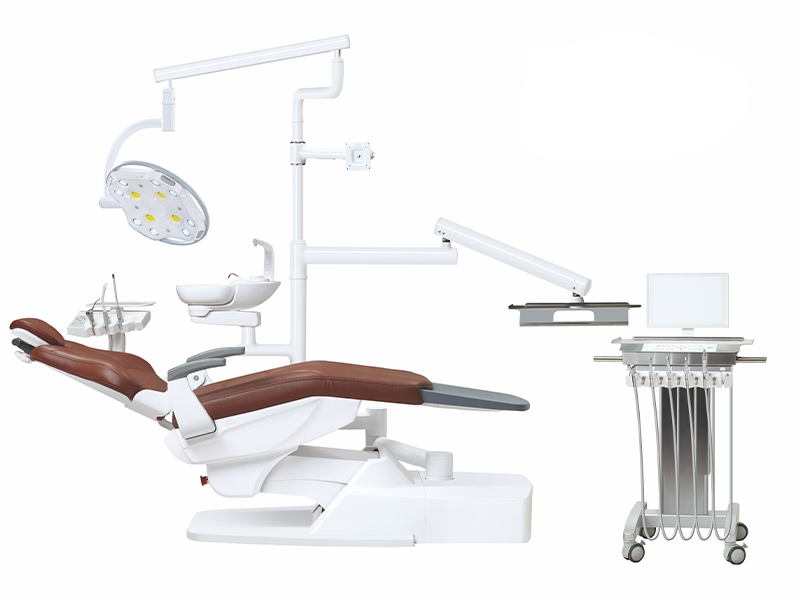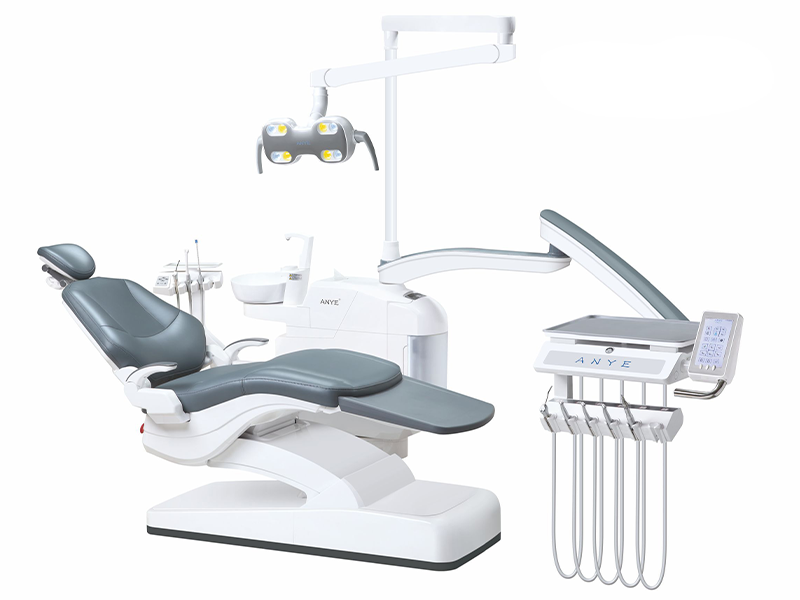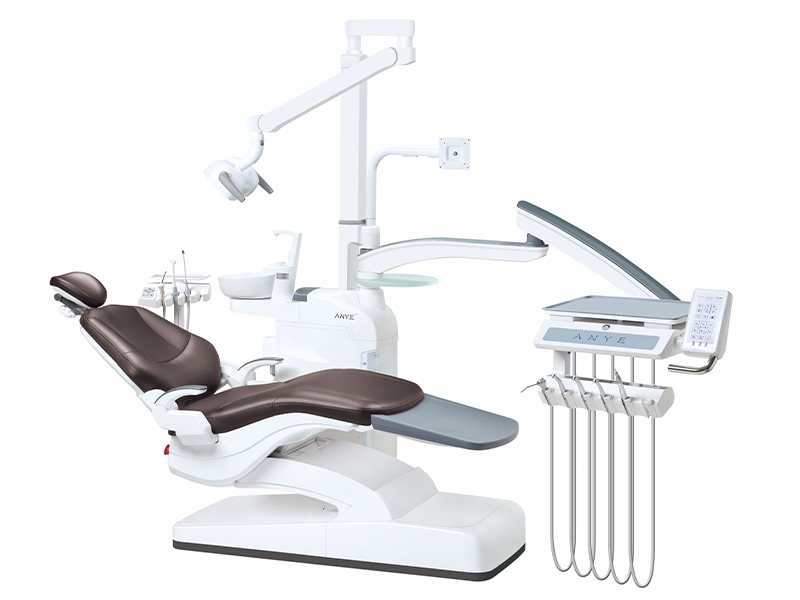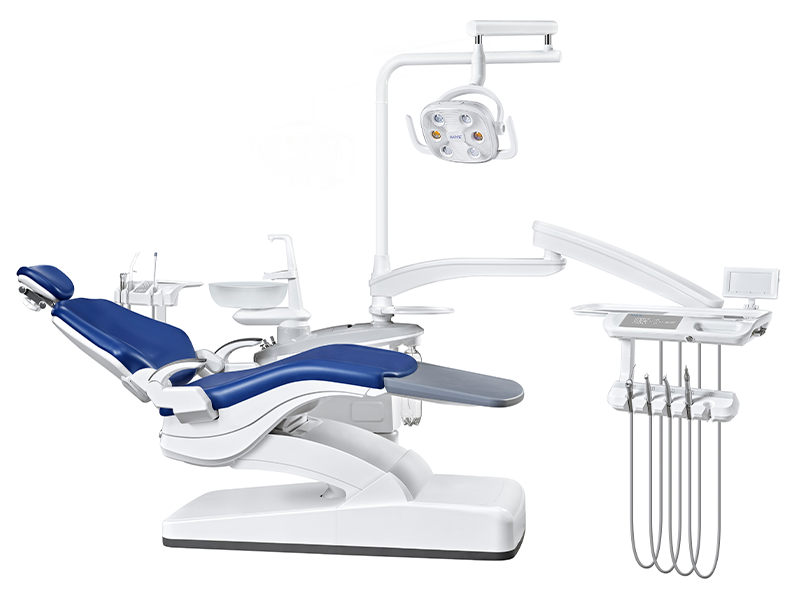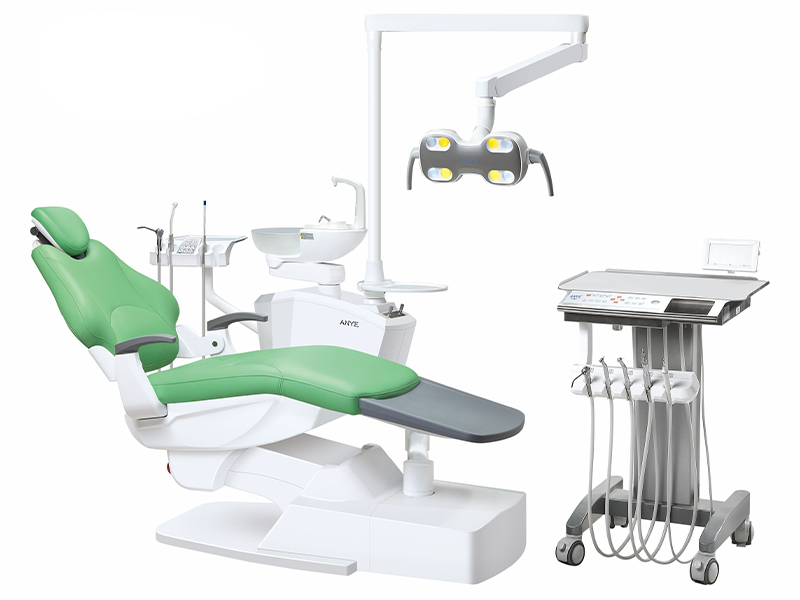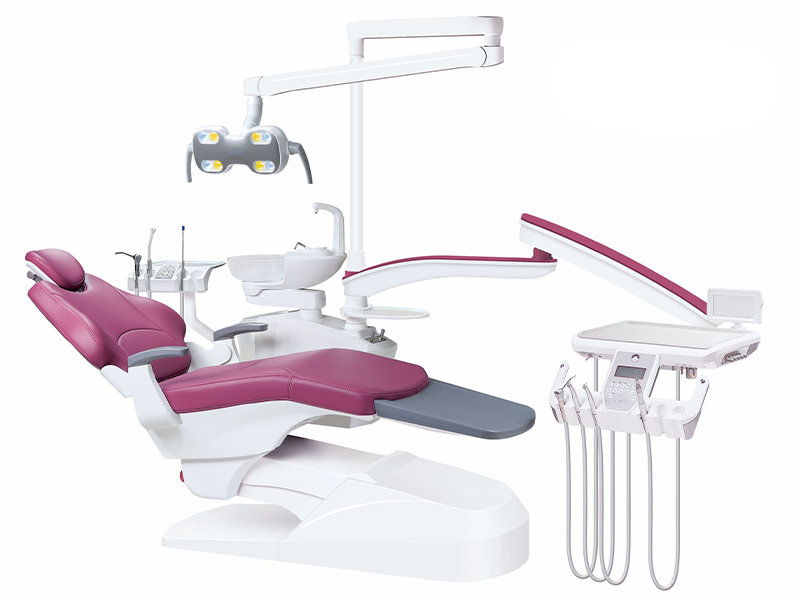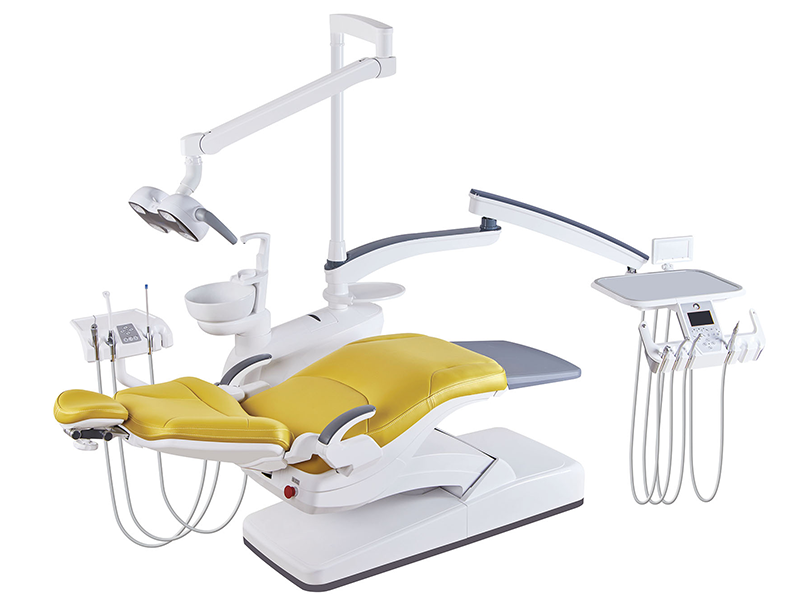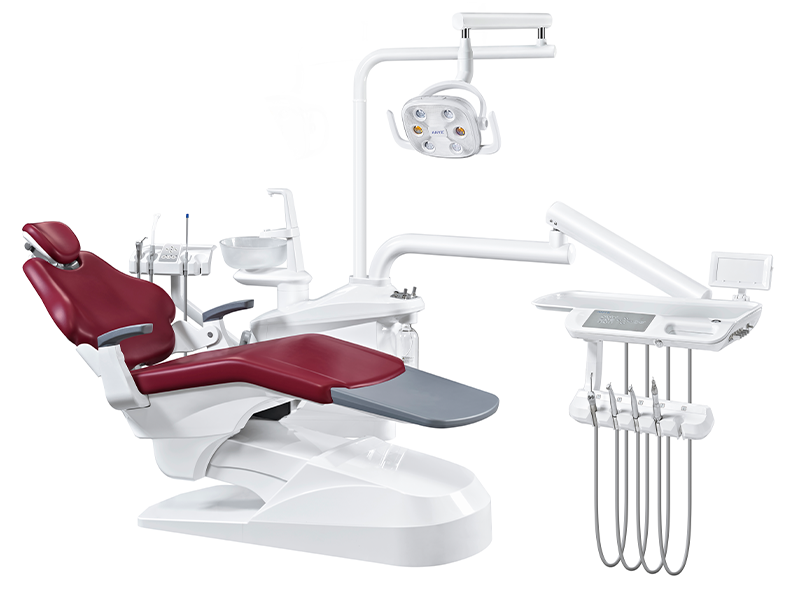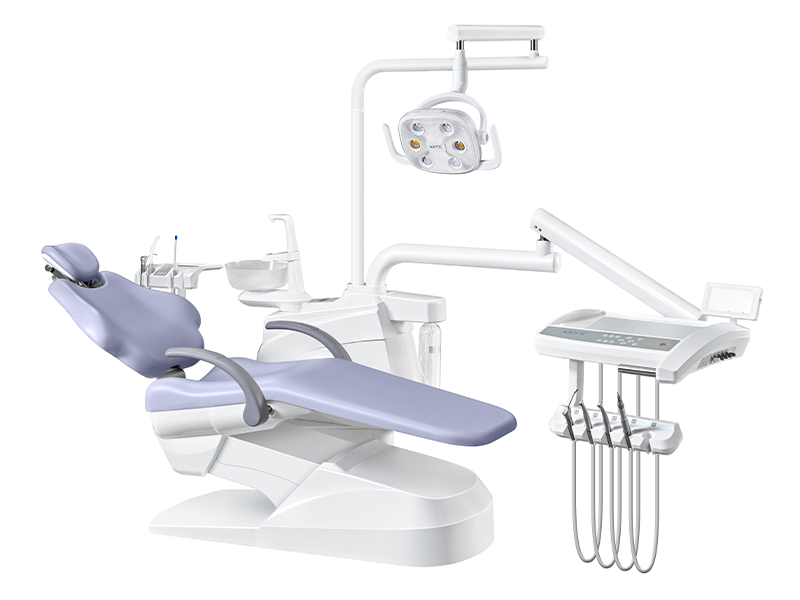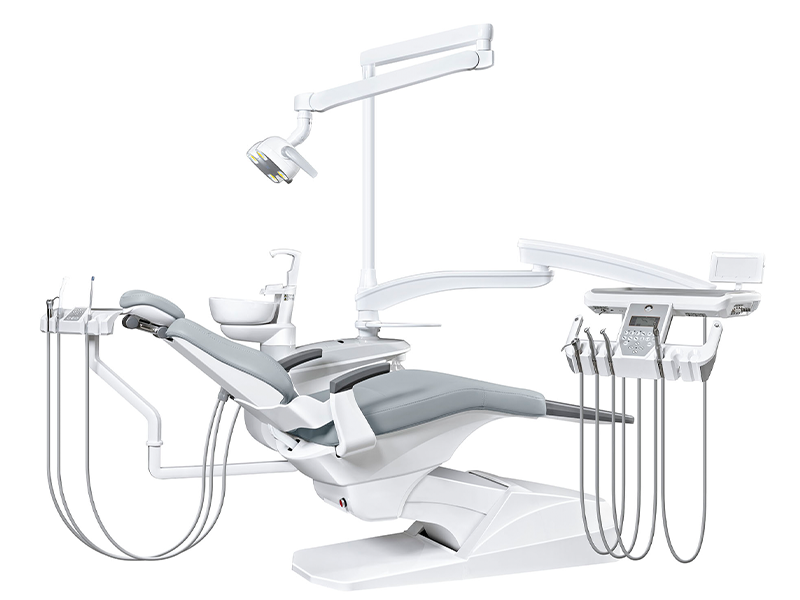A modern dental unit is a highly sophisticated piece of equipment that plays a crucial role in transforming dental care. Not only do these units provide comfort for the patient, but they also enhance the productivity and efficiency of dental practitioners. The dental chair is the centerpiece of these units, ensuring both patient relaxation and ease of treatment for the practitioner. At Anye Dental, we specialize in innovative dental chair solutions tailored for various practices. Our products, such as the AY-215A Series, showcase state-of-the-art technology designed for optimal patient care and practitioner performance.
The Patient Chair: Foundation of Comfort and Ergonomics
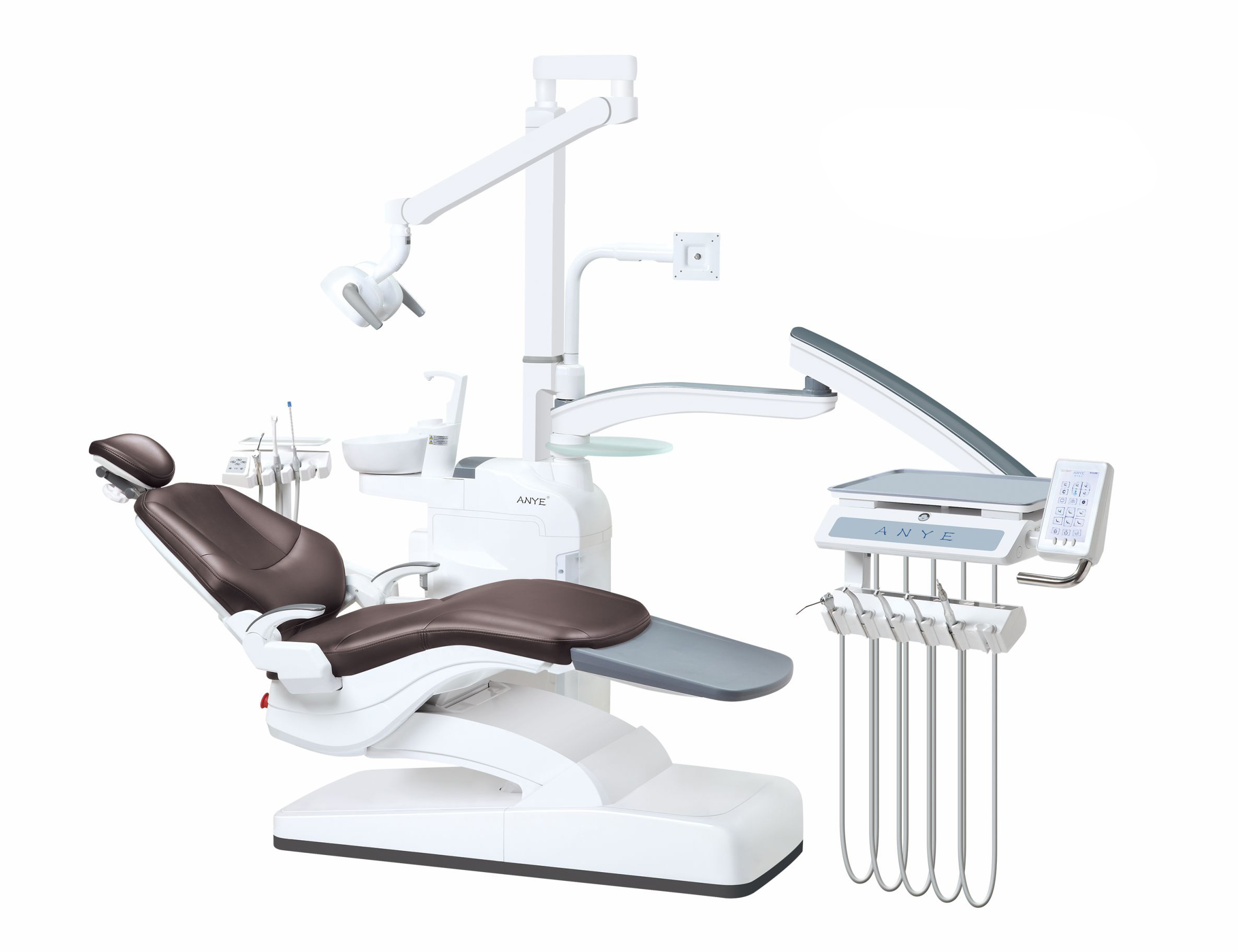
The dental chair is central to any modern dental unit. Designed for patient comfort, it incorporates various features that are essential for both comfort and convenience during dental procedures. The ergonomic design of the chair, along with features like adjustable headrests and lumbar support, ensures that patients can rest comfortably for extended periods. This is especially important for reducing patient anxiety and improving the overall experience.
Anye Dental offers a range of chairs like the AY-215C Series, including AY-215C5, which integrate advanced ergonomic features with high-tech materials. Whether you're looking for compact models or high-end customizable options, our range provides flexibility for any clinic setup. These models ensure optimal comfort for both patients and practitioners, enhancing the overall dental experience.
Types of Dental Units: Tailored for Every Practice
Dental units come in a variety of types, each designed to suit specific practice needs. At Anye Dental, we offer multiple solutions, including portable, compact, and stand-alone units. For example, our AY-215B5 is specifically designed for disinfection, integrating top-tier sterilization technology into the dental unit. This makes it ideal for high-hygiene environments where cleanliness and safety are top priorities.
These units are adaptable to different office layouts, offering options like wall-mounted units for space-saving benefits. Whether you run a mobile clinic or a high-volume dental office, choosing the right unit ensures that the practice runs smoothly and efficiently. Our AY-215A3 offers a flexible and ergonomic design for a variety of clinic sizes, delivering both functionality and comfort.
Delivery System: The Heart of the Dental Unit
The delivery system in a dental unit connects various tools such as handpieces, air, water, and suction systems, all of which are necessary for the treatment process. These systems are engineered to be user-friendly and efficient. Modern units, such as those from Anye Dental, often include automated systems that allow the dentist to focus on the procedure, minimizing interruptions for tool adjustments. For instance, the AY-215A1 features an AI-enhanced delivery system designed for maximum ease of use.
Additionally, features like saliva ejectors and high-volume evacuators are integral to maintaining a clean, dry working area. Proper maintenance of these components is essential to prevent contamination, ensuring patient safety and hygiene. The AY-215B3 integrates a robust delivery system that offers convenience and precision in every dental procedure.
Operating Light: Illuminating Precision
Proper lighting is essential in any dental procedure. The operating light provides the necessary brightness for intricate dental work. Modern operating lights, such as the ones integrated into Anye Dental units, are LED-based, offering bright, natural light that reduces heat emission—important for both patient comfort and accuracy during procedures. Our units, like the AY-215C Series, allow precise light adjustments, ensuring that dentists can work effectively in even the tightest spaces.
Touch-free operations further enhance hygiene, preventing cross-contamination. With advanced features like adjustable intensity and easy control, Anye Dental's lights ensure optimal visibility without discomfort. The ability to adjust light intensity and direction enhances workflow and precision for practitioners.
Foot Control Pedal: Effortless Precision
A foot control pedal offers hands-free operation of various dental unit functions, such as chair movements, handpiece activation, and water/air flow regulation. This feature is particularly beneficial in reducing strain on the dentist, enhancing precision and workflow efficiency. The foot pedal on Anye's models, such as the AY-215D2 for pediatric treatments, helps maintain a sterile environment while allowing for seamless procedure execution.
Foot pedals are designed for comfort and ease of use, allowing for precision adjustments without interrupting the flow of treatment. The ability to control multiple functions with a single foot pedal streamlines the procedure, allowing the dentist to focus solely on patient care.
Specialized Dental Units: Catering to Specific Needs
Anye Dental also offers a variety of specialized dental units, ensuring that every dental professional has the right tools for their specific needs. Whether you're looking for implant chairs like the AY-215A5 for advanced surgeries or a pediatric unit like the AY-215D3, we provide high-quality, customizable options.
For specialized procedures, such as rehabilitation or sterilization, Anye’s units, such as the AY-215E1, offer integrated disinfection systems and adjustable armrests, making them perfect for patients with mobility limitations or those requiring special care. The AY-215C5 is an ideal choice for practices that require sterilization-focused dental work, combining cutting-edge technology with superior hygiene features.
CE and ISO13485 Certifications: Ensuring Quality
At Anye Dental, we prioritize quality and reliability in every product. Our units are designed and manufactured according to CE and ISO13485 standards, ensuring they meet the highest quality and safety regulations. This commitment to quality has allowed Anye to serve dental practices in over 60 countries, with a dedicated focus on precision manufacturing. Our 15,000+ sqm facility is equipped with advanced technologies like Kuka robots and laser cutting, which help us produce dental chairs that are both durable and innovative.
This commitment to precision manufacturing enables us to provide dental professionals with equipment that not only meets rigorous standards but also incorporates the latest in technological advancements. With the integration of advanced robotics and automated systems, we ensure every unit is built to perform at the highest level for years to come.
With our wide variety of dental chair solutions and cutting-edge technology, Anye Dental continues to support dental practices worldwide. Whether you're looking to upgrade your equipment or find a solution that fits your specific needs, we are committed to providing you with the best in the industry. Explore our product offerings today, including the AY-215A1 and AY-215E1, to enhance the quality of care at your practice.

